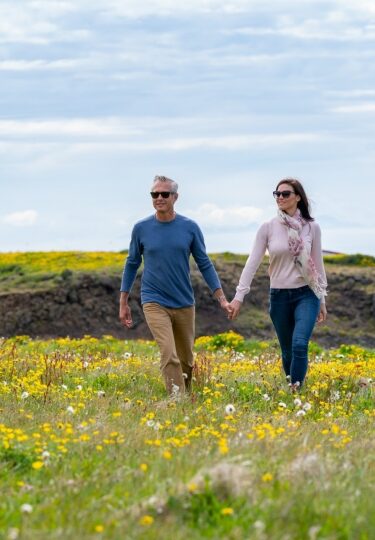Iceland offers intrepid travelers a dramatic landscape of wild tundra, spectacular volcanoes, blue-white glaciers, and cascading waterfalls, all within easy reach of charming coastal cities. This North Atlantic island is also home to some of the planet’s most captivating wildlife, including whales, pods of dolphins, and the world’s largest puffin colony.
On a visit to Iceland in the summer, you’ll be able to enjoy many of the best experiences here—including hiking, kayaking, and whale watching—which are only possible during this milder season.
Between June and August, you could also visit some of Iceland’s remote islands, such as Grímsey, snorkel in the clear waters of Silfra Fissure in Thingvellir National Park, and witness the magical midnight sun, when the country sees nearly 24 hours of daylight.
Iceland is a truly remarkable destination to visit no matter what the season. But go in summer to enjoy these nine incredible experiences.
Go Whale Watching
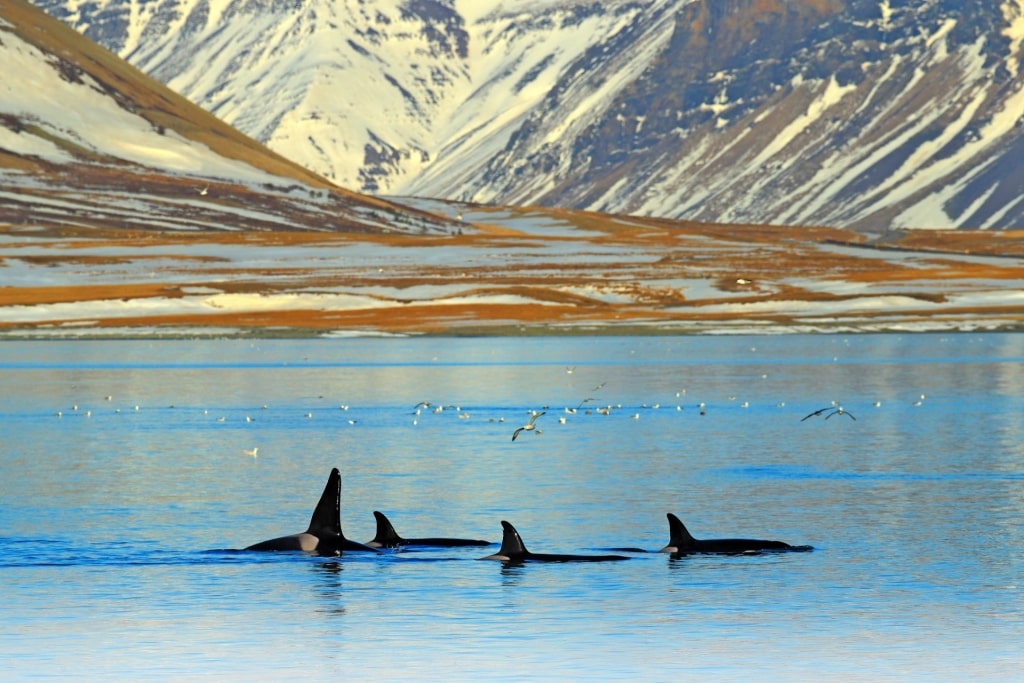
Orca
For nature lovers and adventure seekers, whale watching is a bucket list experience. Whale watching is one of the best things to do in Iceland in the summer, with feeding whales drawn to Iceland’s nutrient-rich waters and the clement weather offering a more pleasant sailing experience.
You’re probably wondering which whale species you are most likely to spot in the summer? You stand a good chance of seeing humpback, orca, sperm, pilot, and minke whales, plus pods of dolphins. As a bonus, you’ll see a wide range of seabirds, including puffins.
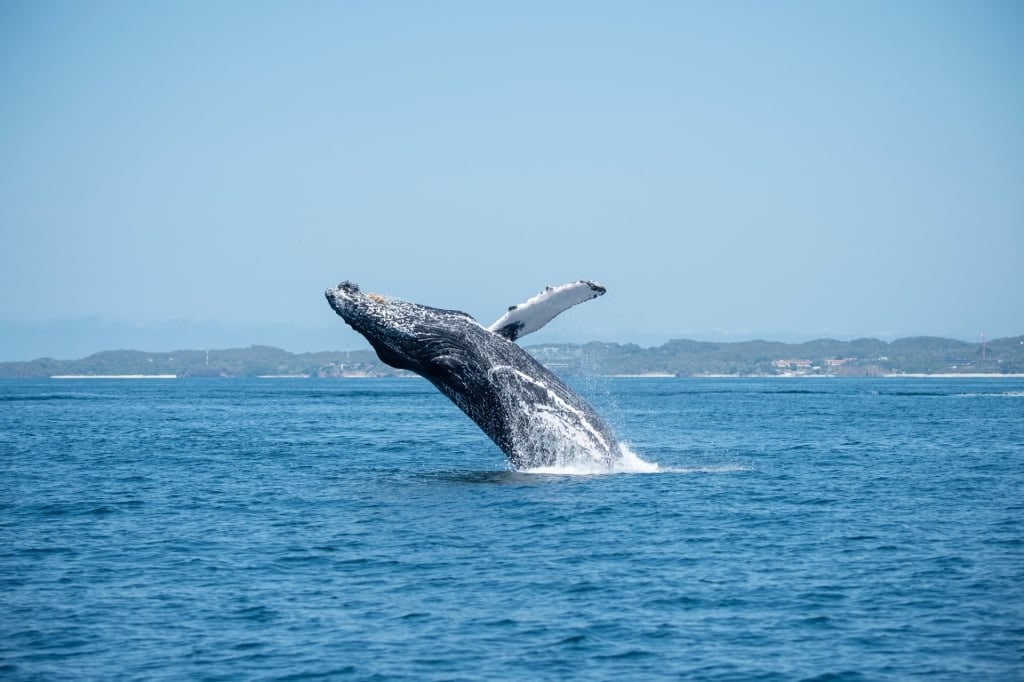
Humpback whale
Whale-watching trips depart from Akureyri in the north of Iceland and Reykjavik in the west, though sightings are never guaranteed. Opt for a tour between June and August to maximize your chances of seeing these majestic mammals. Humpbacks are particularly active, tail slapping and breaching.

Eyjafjörður
On trips from Akureyri, you will typically look for humpback whales on the glistening Eyjafjörður, the longest fjord in Iceland. You could even embark on a midnight sun whale-watching experience during summer from Reykjavik.
Pick a tour led by an expert whale guide, such as a marine biologist, who will know where to look and offer insightful commentary during your trip.
Read: How to Spot Marine Mammals From a Cruise Ship
Marvel at Fagradalsfjall Volcano
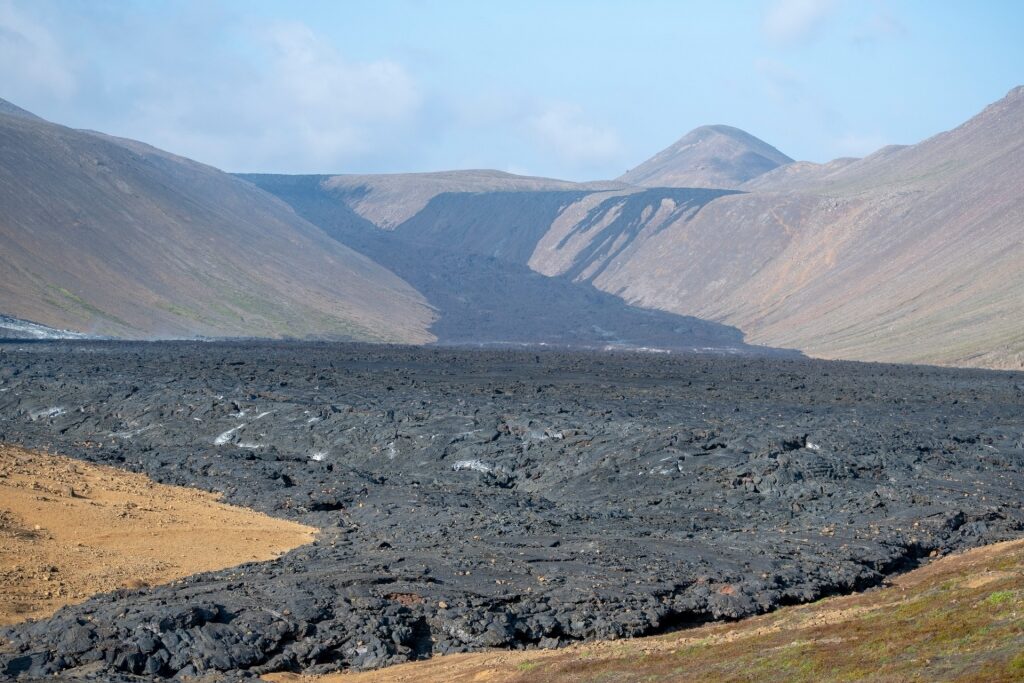
Fagradalsfjall Volcano
You won’t regret visiting Fagradalsfjall volcano in the Reykjanes Peninsula, under an hour’s drive from Reykjavík in southwest Iceland. Bubbling hot lava flowed from Fagradalsfjall for six months when the volcano erupted in March 2021, with the bright-orange magma creating new lava fields and craters.
One of the most extraordinary things to do in Iceland in summer is to hike to Fagradalsfjall volcano and the newly formed lava fields. A couple of rugged hiking routes lead to the volcano, with the longest track under three miles.
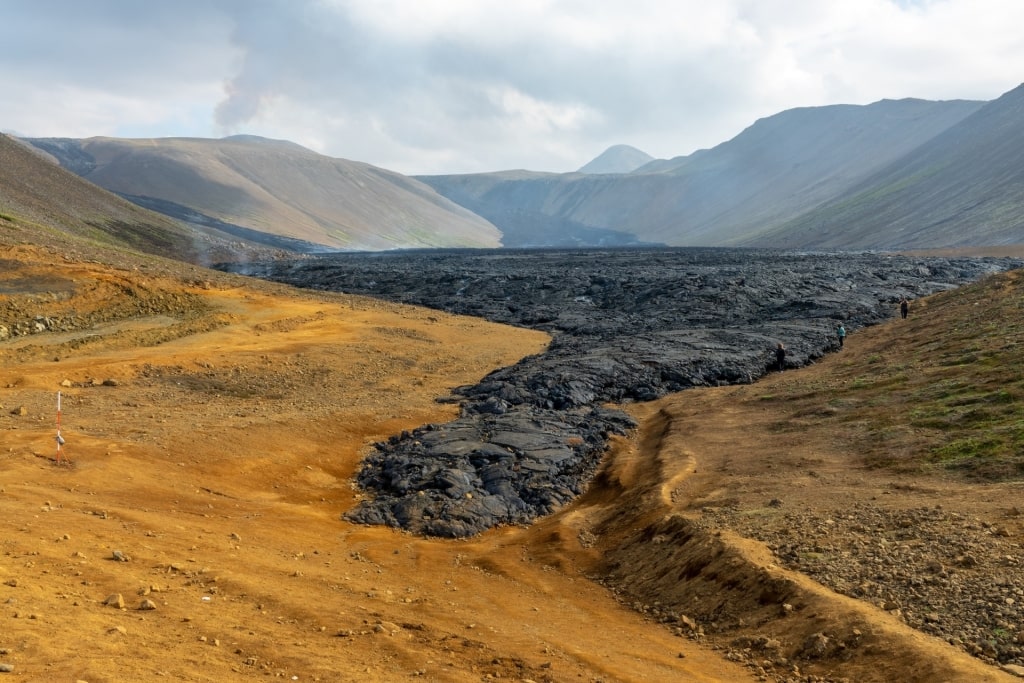
Fagradalsfjall Volcano
Summer typically offers the best visibility within this UNESCO Global Geopark, though it’s not uncommon to experience three or even four seasons in one day in Iceland. Wear appropriate clothing, which means layering up with waterproofs. Hiking boots are essential, too, due to the volcanic terrain you’ll climb.
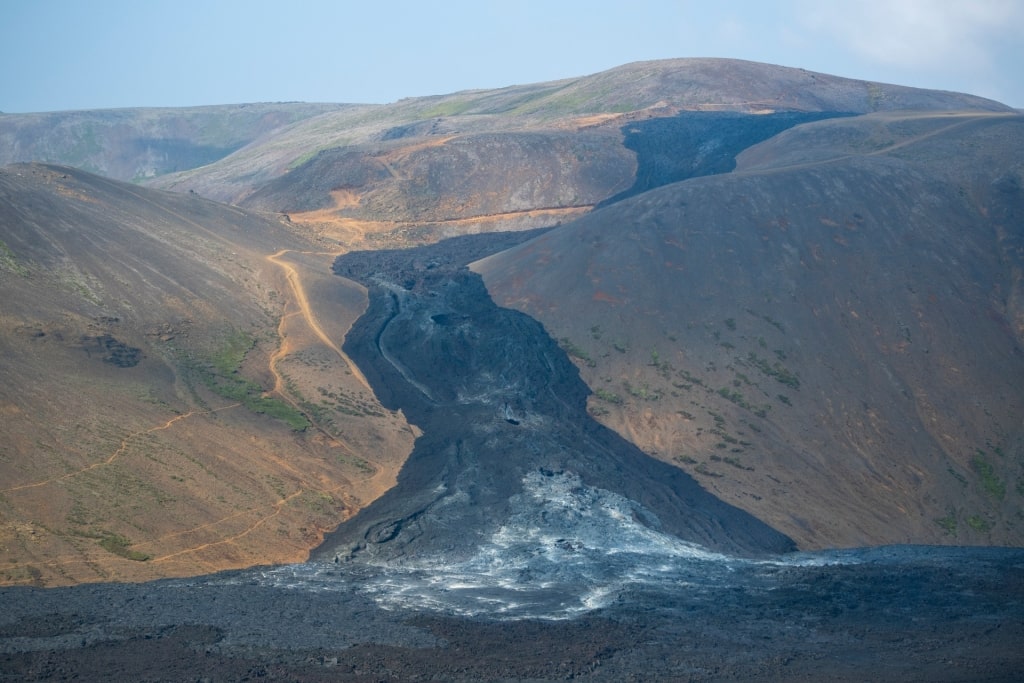
Fagradalsfjall Volcano
Visit Fagradalsfjall with a local guide to get the most out of your experience. One of the best ways to witness the eruption site, if you prefer not to hike, is to join a scenic helicopter flight over the Reykjanes Peninsula.
Read: 12 Best Hikes in Iceland
Spot Puffins on Grímsey Island
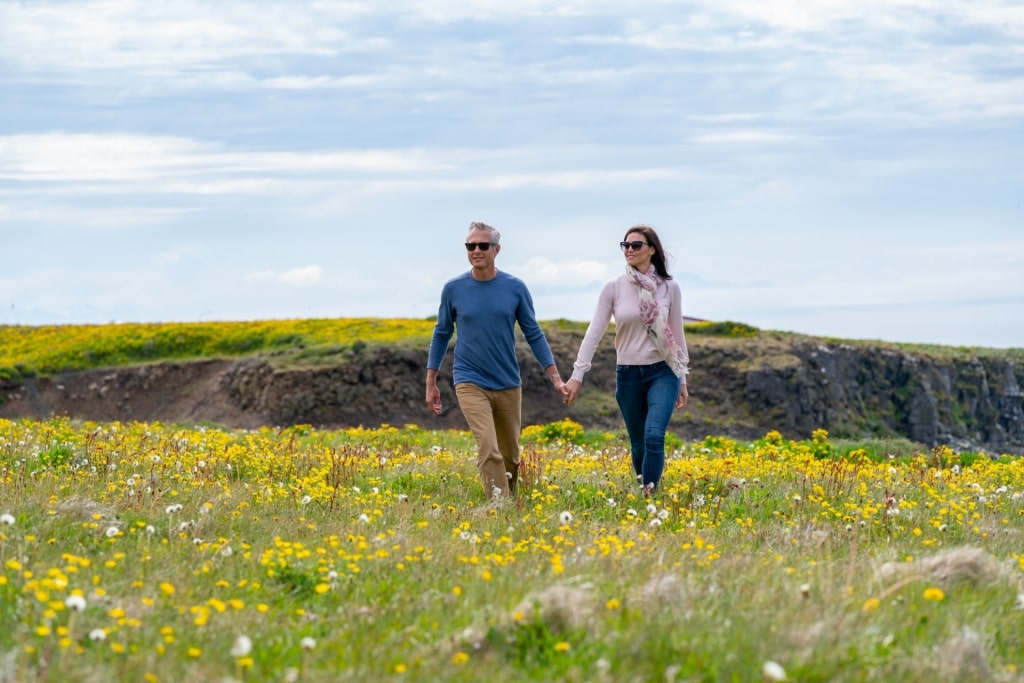
Grimsey Island
Another highlight of Iceland in the summer is puffin spotting on the small Grímsey Island in Steingrímsfjörður. Located roughly 25 miles off Iceland’s north coast, straddling the Arctic Circle, Grímsey Island is packed with nesting puffins from mid-April until the beginning of August. It’s one of the best places to experience Iceland’s nature.

Grímsey Island
On a boat tour from Akureyri, these enchanting orange-beaked, white-breasted birds can be spotted all around Grímsey’s craggy, wind-beaten coastline. When exploring the island, make sure you stick to marked trails so as not to disturb nesting birds. Look out for seals and whales in the waters around Grímsey, too.
Don’t forget to pack your camera and binoculars to go bird-watching on Grímsey Island. Between April and August in Iceland is the best time to catch a wide array of migrating birds, including gannet, black-legged kittiwake, razorbill, black guillemot, murre, and tern. Be careful of Arctic tern, which are territorial and won’t hesitate to attack humans approaching their nests.

Grímsey Island
You may also want to consider a scenic flight over Grímsey from Akureyri to gain a bird’s eye view of the grass-carpeted landscape—particularly if you have limited time.
Snorkel in Silfra Fissure
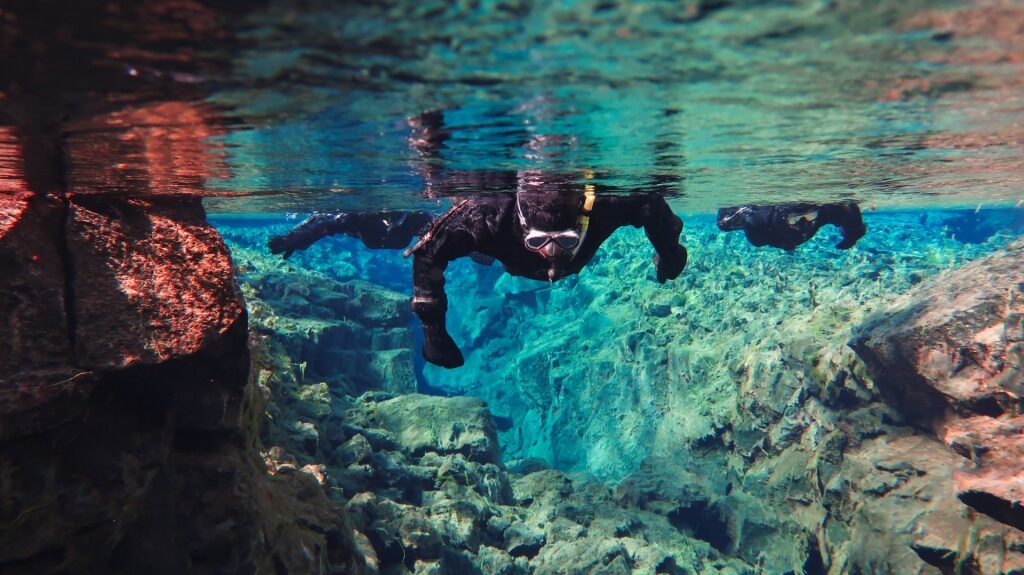
Silfra Fissure
At the northern tip of Thingvellir Lake, within Iceland’s Thingvellir National Park, Silfra Fissure is a narrow underwater volcanic canyon between the North American and Eurasian tectonic plates. One of the best things to do in Iceland in summer is to dive or snorkel at this dazzling natural landmark.
The water at Silfra is considered among the clearest in the world due to the fissure’s lava rocks filtering the Langjökull glacial meltwater. The water’s incredible clarity—which changes from a light cyan shade to a cobalt hue the deeper you dive—makes it one of Iceland’s top snorkeling and diving sights. There are no fish to look at, but algae in rich, jewel-like colors, as well as dramatic rock formations.
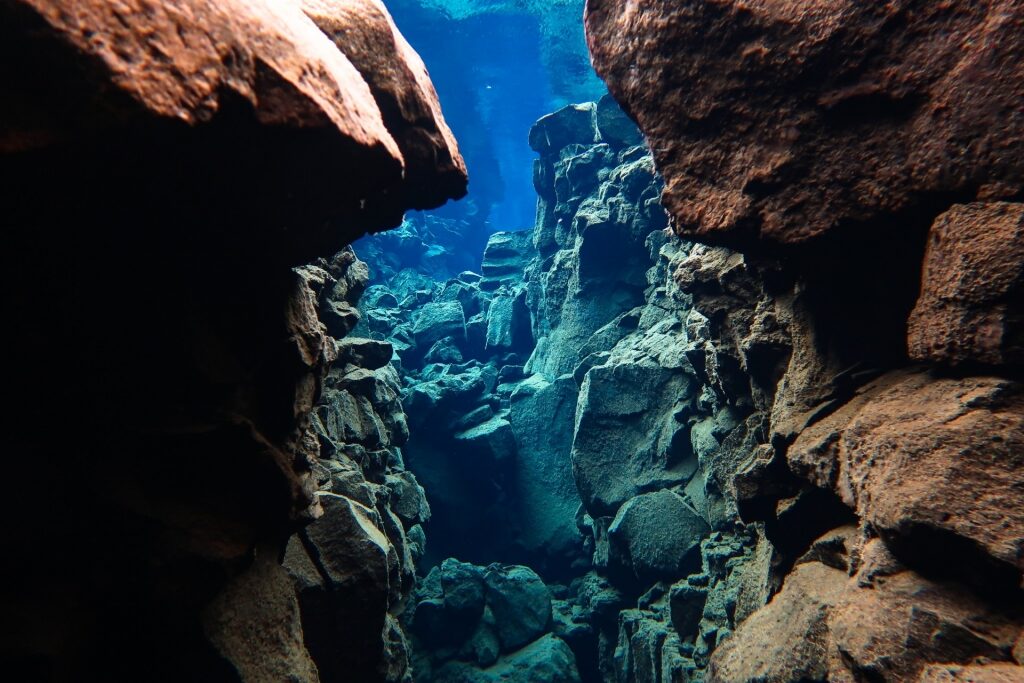
Silfra Fissure
Snorkeling at Silfra requires no previous experience or certification, though you will need to be a confident swimmer. Drysuits are provided by the operators that offer tours here. To dive, you’ll either need a dry suit certificate, which qualifies you to dive in cold waters, or have carried out 10 registered dry suit dives within the two years before your visit.
You’ll need to layer up under your drysuit, including a base layer (ideally wool, fleece, or synthetic-based), topped with an undersuit. These layers will help to keep you warm in the cold water.
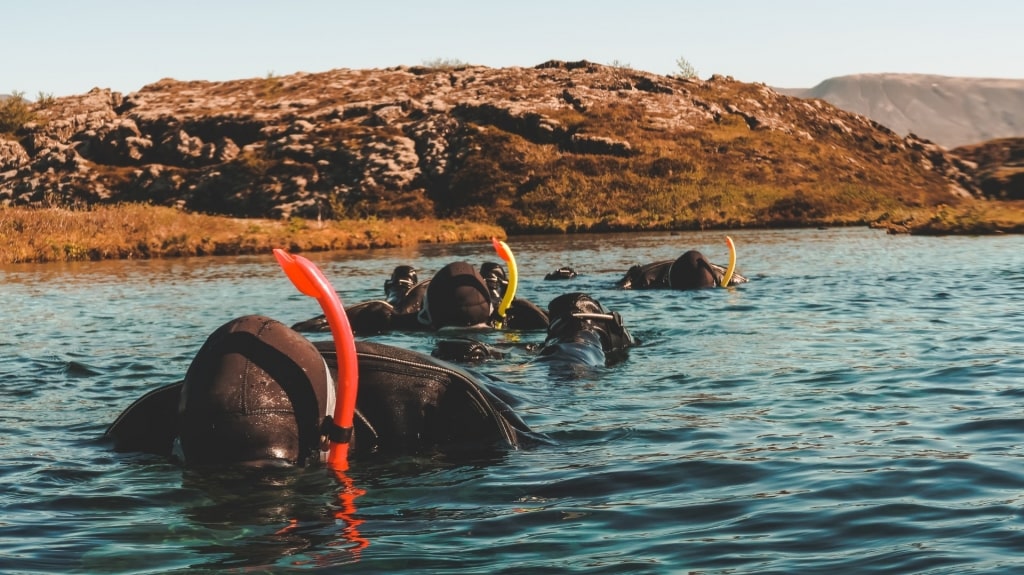
Silfra Fissure
Although you can snorkel and dive at Silfra Fissure year-round, with the water temperature consistently around 35 degrees Fahrenheit, the best time is summer, when surface conditions are less challenging, and there’s a chance the sun could be shining as you emerge from your watery adventure.
Dive and snorkel operators will make sure you get a photograph of yourself on your expedition. Not many people can say they’ve been suspended in the water between two tectonic plates—one of the reasons why this is known as one of the best snorkeling spots in the world.
Discover Vigur Island During the Annual Eiderdown Harvest
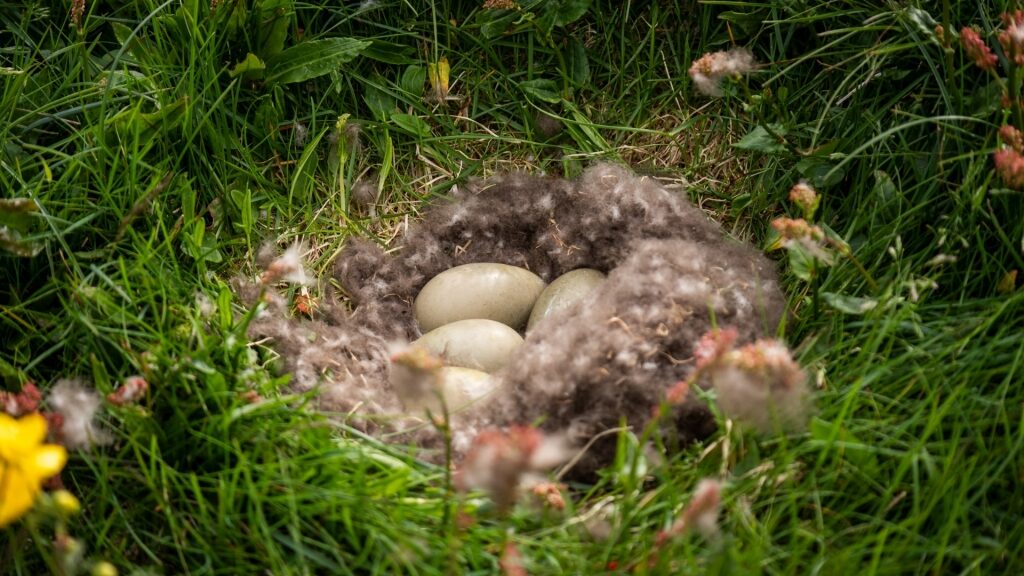
Eider duck eggs
Located on the glassy Ísafjarðardjúp fjord in Iceland’s northwest, Vigur is a haven for birdlife, including colonies of eider ducks. By May of each year, around 7,000 breeding eider ducks—fiercely protected by the island’s farmers—descend on Vigur.
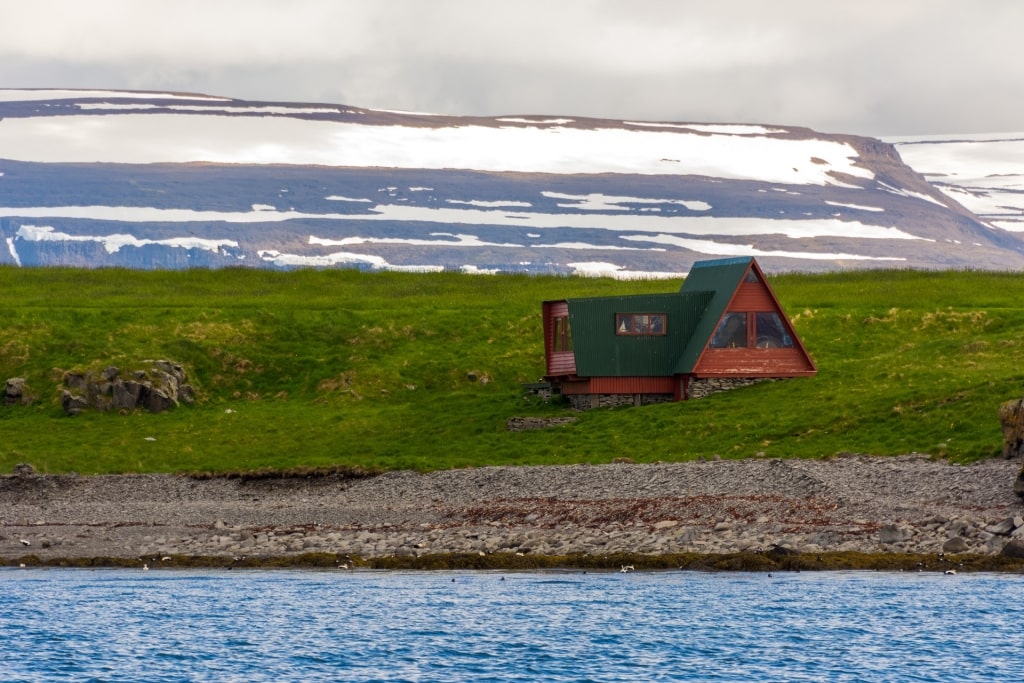
Vigur Island
These seabirds nest all over this remote paradise from April to September. The local community begins the annual eiderdown harvest from June in Iceland, collecting the ultra-soft and lightweight eiderdown left behind by the female ducks, who use their own feathers to line their nests. Some 85 percent of the world’s eiderdown is produced in Iceland – and the birds are not harmed.
One of the top things to do in Iceland in summer is to take the 30-minute ferry ride from Ísafjörður to Vigur Island to witness the harvest. Visit the Down Processing Plant to see the handful of traditional machines used to process this precious commodity.
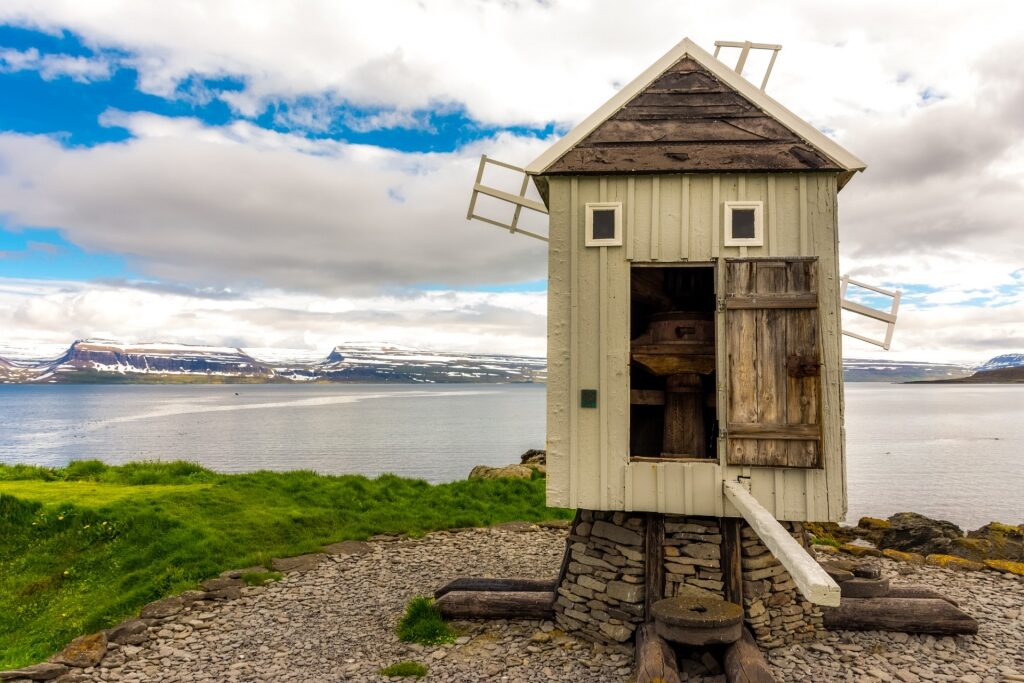
Vigur Island
While you’re on Vigur Island, check out the quaint post office, known as the smallest in Europe, and the only windmill in Iceland. There’s also a thriving seal colony off the southern tip of Vigur and whales can sometimes be spotted splashing near the island during summer.
Read: Best Things to Do in Isafjordur
Explore Hornstrandir Nature Reserve
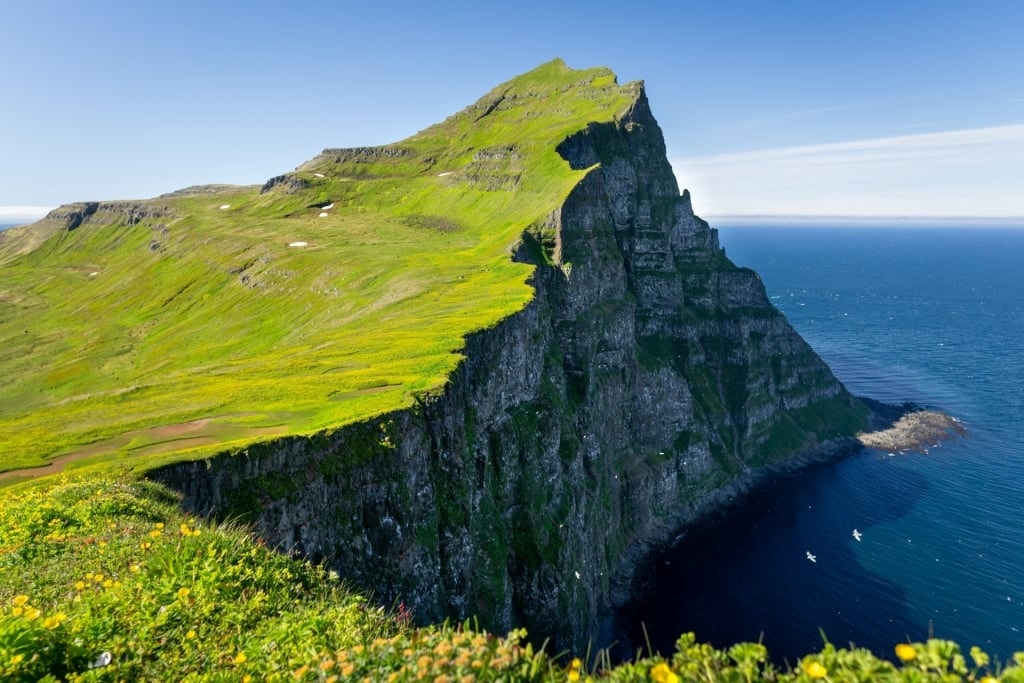
Hornstrandir Nature Reserve
Hornstrandir is a breathtaking nature reserve in the far-flung Westfjords in northwest Iceland. Defined by the low-lying Drangajökull glacier, sweeping Icelandic beaches, and jagged cliffs that plunge into the glistening icy waters, Hornstrandir’s isolated beauty is preserved with no roads, permanent dwellings, or shops.
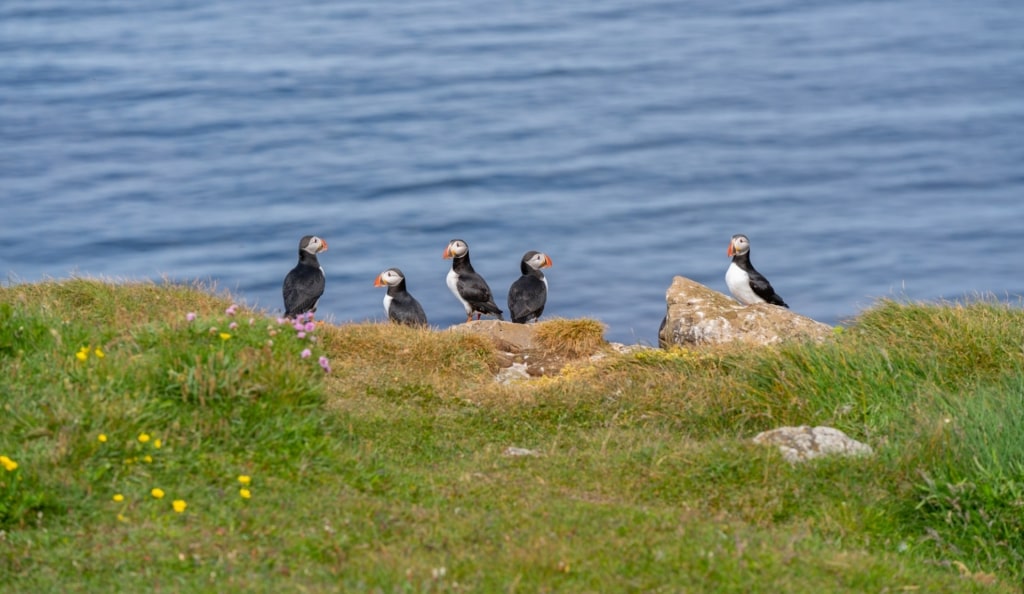
Puffins
What Hornstrandir lacks in infrastructure, it makes up for with an abundance of flora and fauna. The protected reserve is teeming with birdlife, including guillemot, fulmar, kittiwake, razorbill, and puffin, and 260 types of flowering plants in vivid shades of yellow and purple.
A ferry service and boat tours operate from Ísafjörður to the remote Hornstrandir during summer, which is the only time it’s possible to explore this wild nature reserve.
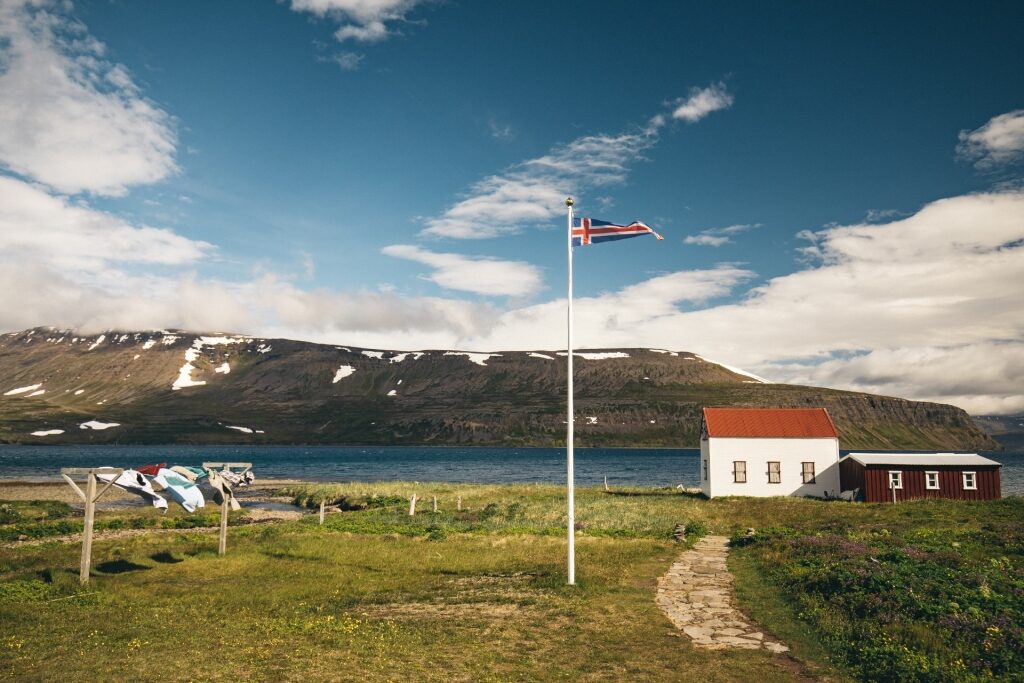
Hesteyri
Head for the south-facing hamlet of Hesteyri, facing the Jökulfirðir fjord, to explore the vestiges of an abandoned village, once occupied by around 80 residents. Wander around the village, where traditional Icelandic snacks and drinks are served from what was once the doctor’s house.
You can also see the remains of a former whaling station that dates back to 1894. The station operated until 1915, before it was turned into one of the earliest herring factories in Iceland.
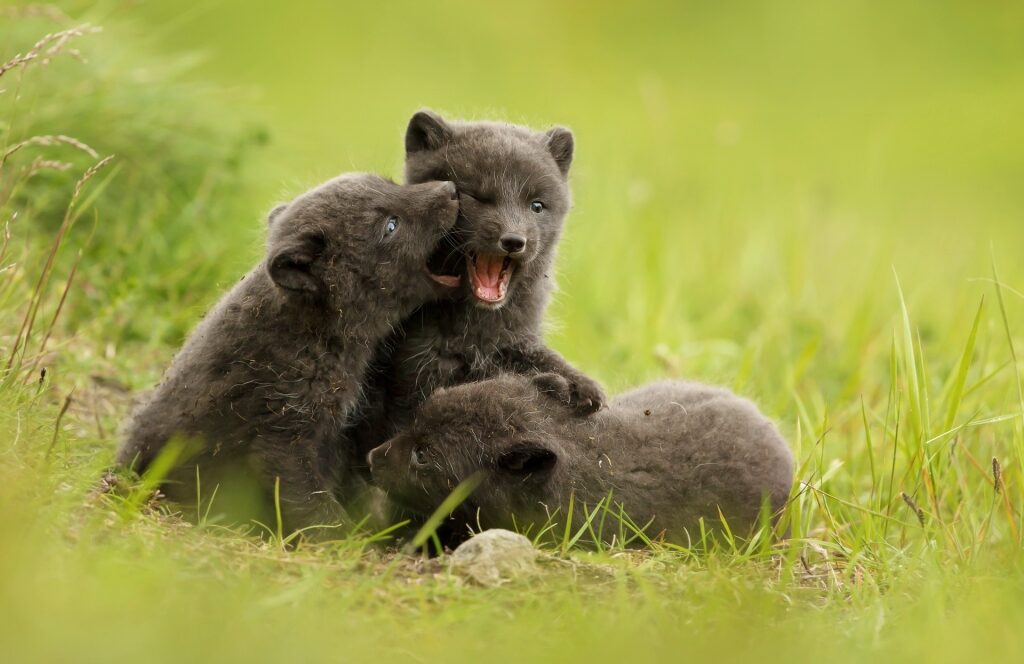
Arctic foxes
A coastal hike runs roughly nine miles between linking Aðalvik and Hesteyri. There are plenty of shorter walks to enjoy, too, offering excellent opportunities to spot various birds and the chipper Arctic foxes hunting for food.
Bathe at the Blue Lagoon
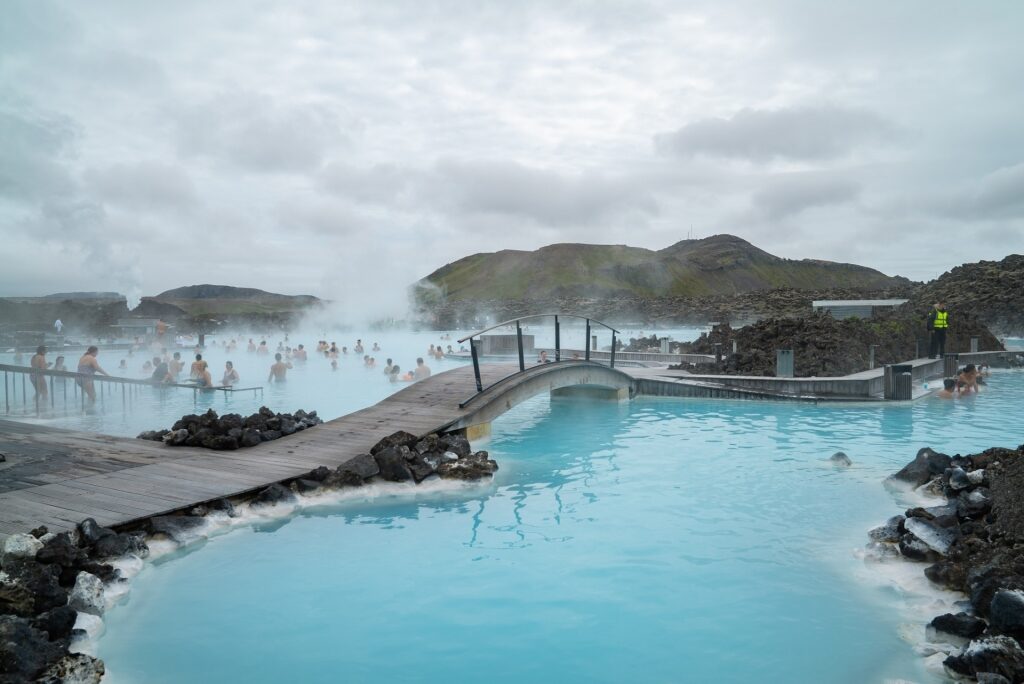
Blue Lagoon
One of Iceland’s most beautiful places, the Blue Lagoon on the Reykjanes Peninsula is a series of steaming-hot pools filled with mineral-rich, geothermically heated waters. The Blue Lagoon is cradled in a dramatic lava field near Grindavík, with the water supplied from the nearby Svartsengi geothermal power station.
The Blue Lagoon’s alluring pools are artificial—in contrast to Iceland’s many natural pools—but to bathe here remains one of the best things to do in Iceland in summer. For the best experience, go late in the day, when it’s still light. The latest entry to the pools in the summer months is 8 pm.
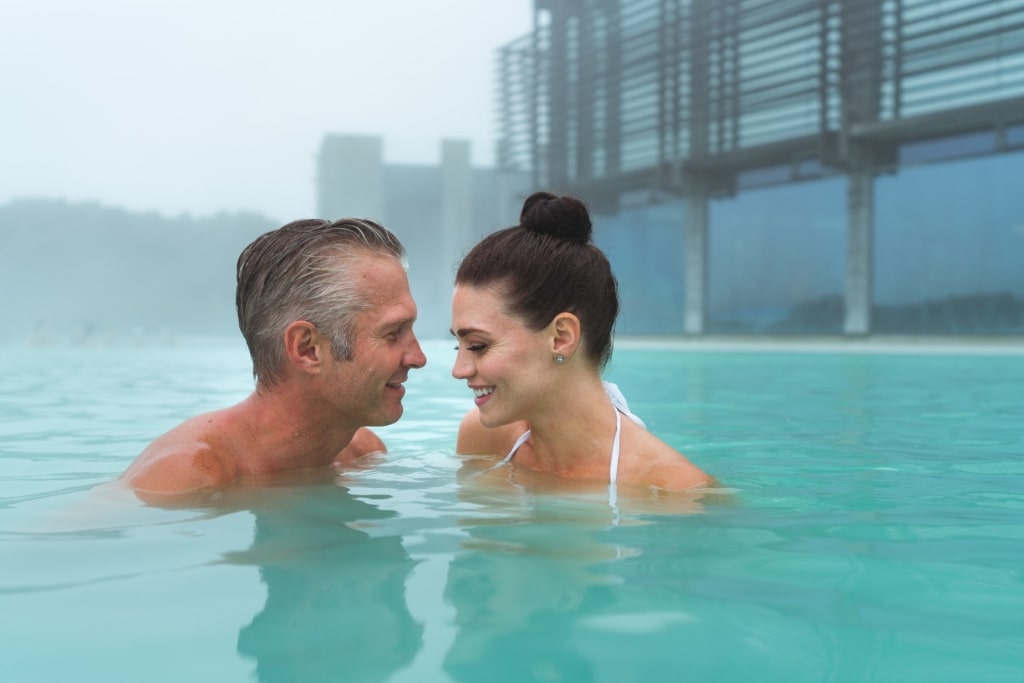
Blue Lagoon
Enjoy a relaxing dip in the geothermal spa pool and apply a silica and algae mud mask. Relax in the Blue Lagoon’s sauna and steam room and sip on a drink from the swim-up bar.
Be aware that you’ll need to shower without a swimsuit before entering the Blue Lagoon’s milky white water, though there are some private cubicles.
Complimentary shower gel and hair conditioner are provided. To avoid the silica mud causing havoc with your hair, apply and leave in the conditioner before stepping into the Icelandic hot spring.
Book a treatment at the Retreat Spa if you’re looking for a more indulgent experience. Sumptuous massages are also available. After your spa session, sample fresh Icelandic cuisine at one of the four restaurants.

Reykjanesvíti, Reykjanes Peninsula
Stop by Reykjanesvíti—Iceland’s oldest lighthouse—on the very tip of the Reykjanes Peninsula, just a short distance from the Blue Lagoon. During the summer, Reykjanesvíti is partially surrounded by a gorgeous haze of purple lupin, a wildflower that was introduced to prevent erosion and blooms all summer long.
Read: Best Places to Travel With Friends
Gaze at Gullfoss Waterfall
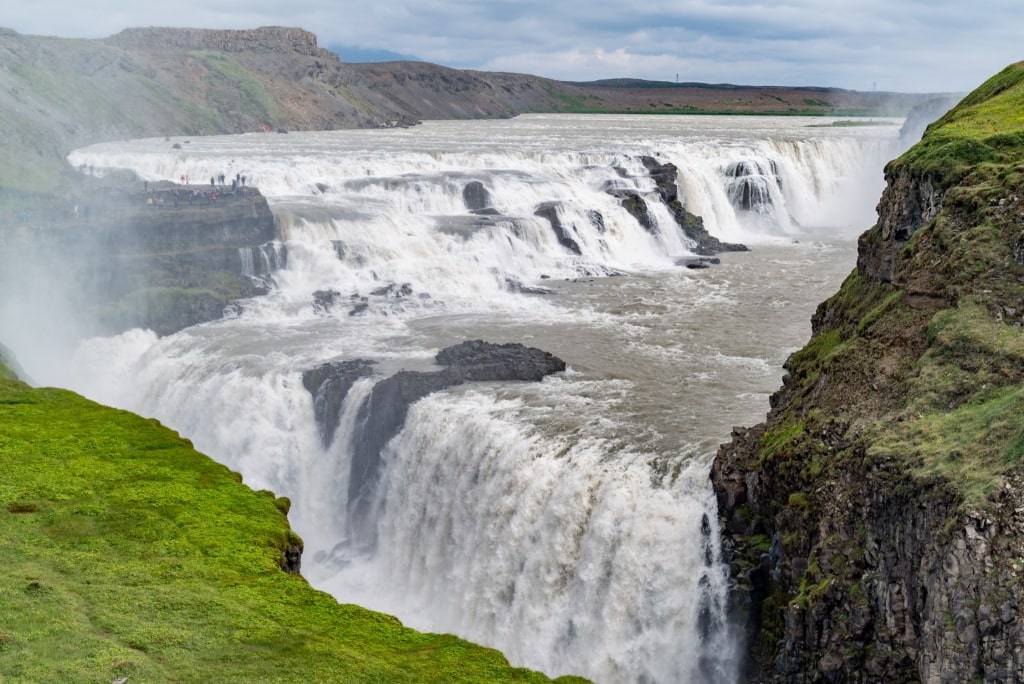
Gullfoss Waterfall
A visit to Gullfoss, which translates as Golden Falls, is one of the best things to do in Iceland. Located in the Hvítá river canyon, Gullfoss is on the country’s famous Golden Circle route, including Thingvellir National Park and the Geysir geothermal area.
Langjökull glacier’s meltwater travels along the Hvítá river before cascading 105 feet down Gullfoss’s two-tier drop. The best time to visit Gullfoss is during summer, when approximately 459 cubic feet of water per second thunders down the Icelandic waterfall—in winter, this drops to around 358 cubic feet, so the falls are less dramatic.
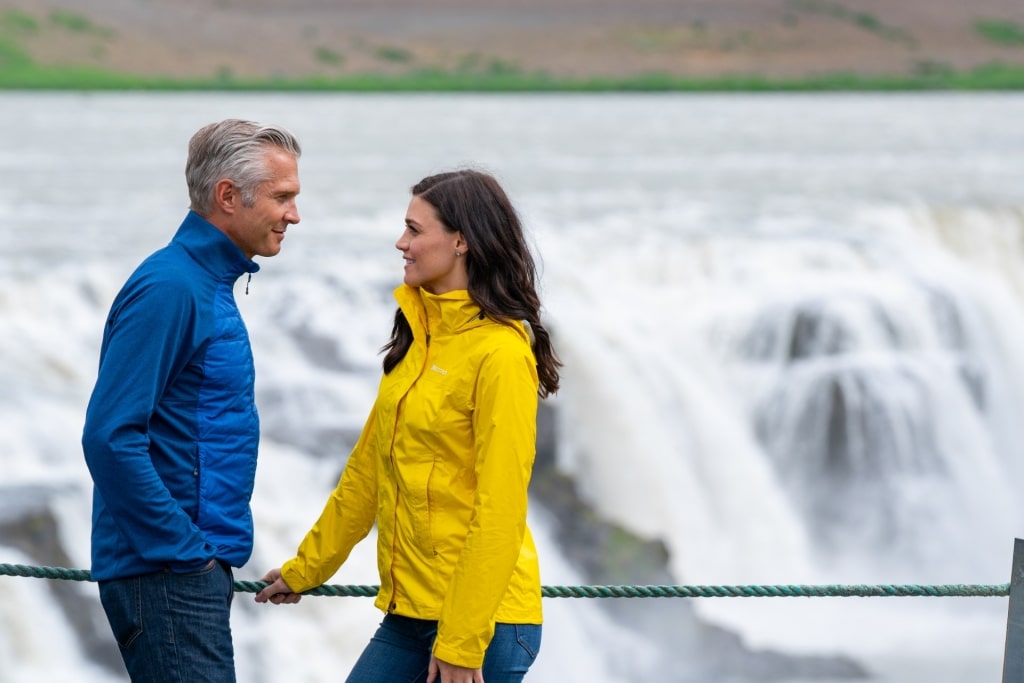
Gullfoss Waterfall
Reached in under two hours from Reykjavík, the jaw-dropping Gullfoss can be admired from the viewing platform near the parking lot. You can get pretty close to the falls from the position of the narrow path so expect to pick up some of the refreshing spray.
You may even spot a beautiful rainbow appearing if conditions are right.
Attend a Concert in Reykjavík
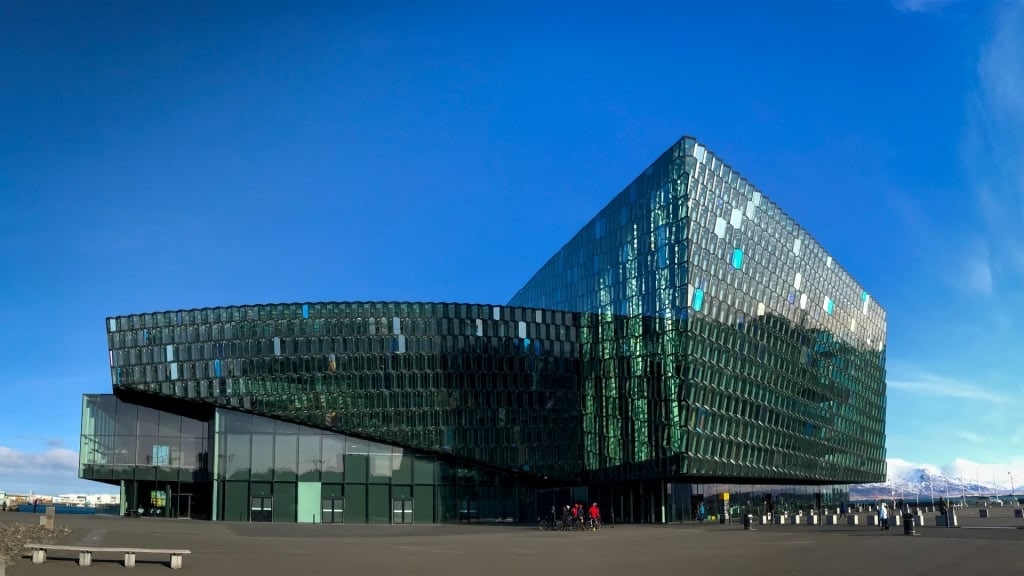
Harpa, Reykjavik
The charming capital of Iceland offers a pretty waterfront dominated by the striking Harpa concert hall that opened in 2011, located in Downtown Reykjavik.
The building—featuring a colored glass facade designed to mirror Iceland’s landscape—is the residence of the Iceland Symphony Orchestra, Icelandic Opera, and Reykjavik Big Band.
One of the best things to do in Reykjavik is to attend a concert at Harpa, with a range of musical events covering everything from opera and jazz to classical and brass. The biennial Reykjavík Arts Festival sees a series of events across the city every other June, including musical recitals held at Harpa.
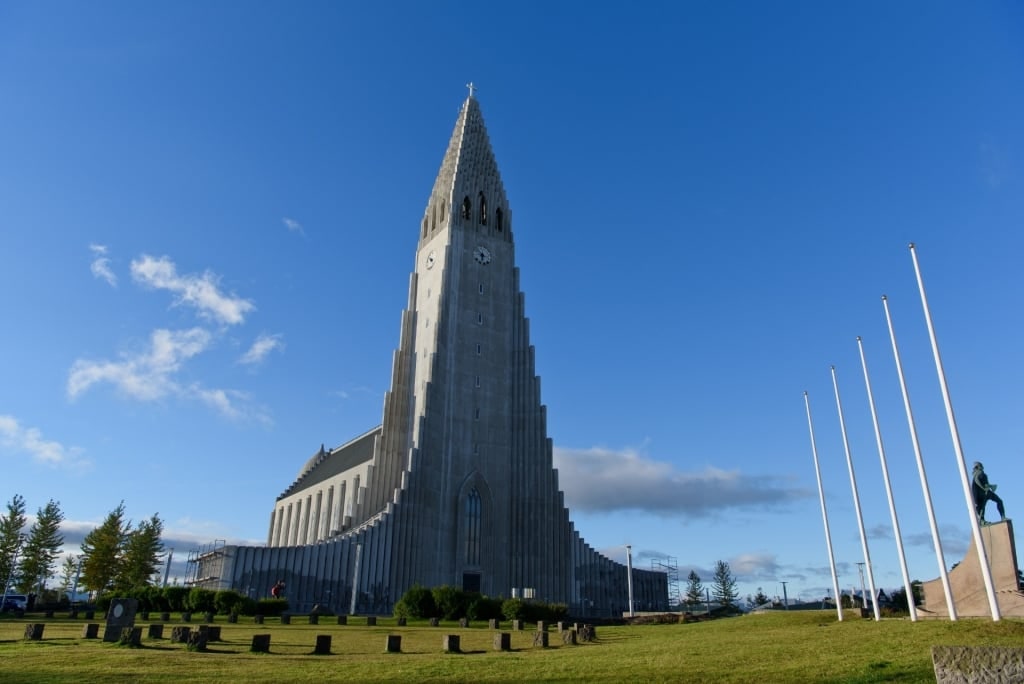
Hallgrimskirkja church, Reykjavik
Alternatively, Reykjavík’s iconic Hallgrimskirkja church, which dominates the city’s skyline, also hosts a selection of concerts throughout the year.
Read: Best Summer Destinations in Europe
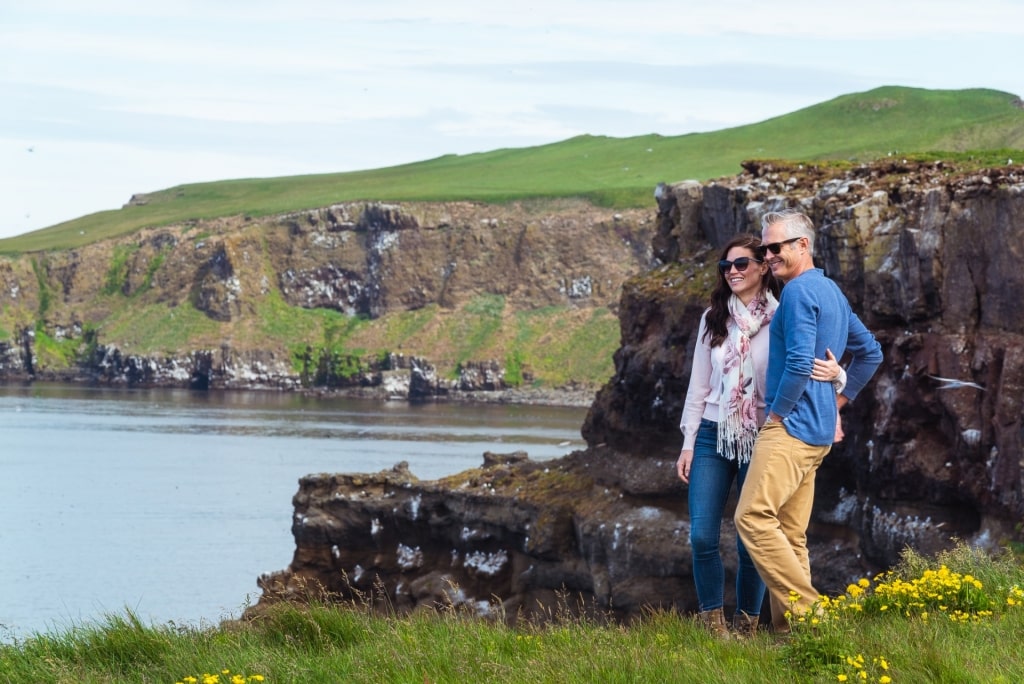
Grimsey Island
Discover the exciting destinations of Akureyri, Reykjavik, and Isafjordur on a cruise vacation. Browse our cruises to Iceland to experience this incredible country in the summer.
